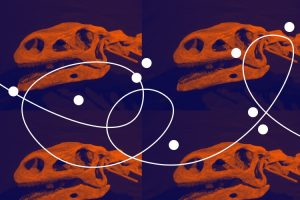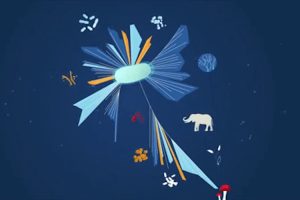“Only a very few groups of early mammals sur...
Palaeonthologist Zhonghe Zhou on the diversity of extraordinary animals in the Jurassic Period

In July Science published an article called “Why the seahorse tail is square.” We asked one of the authors, Prof. Michael Porter from the Clemson University, to comment on this study.
Seahorses are an unusual clade of fishes. In addition to their distinct equine profile and upright posture, they possess a prehensile –grasping– tail that is square in cross-section and encased by a rigid bony armor. When compared with other grasping tails observed throughout the animal kingdom, the square prismatic shape of a seahorse tail is rather strange; most animals have cylindrical tails. Thus, we set out to determine why the seahorse tail is square, and used 3D-printed models to compare the mechanical performance of a biomimetic square tail versus a hypothetical cylindrical tail – hypothetical because seahorses do not have cylindrical tails.
Using 3D-printing as a tool to study biology,we were able to investigate certain biological hypotheses that would be otherwise impossible to test. We hypothesized that the square prism structure, as seen in the natural skeleton of a seahorse tail, is a superior design for grasping and armored functions when compared with a cylindrical one. In this study, we designed two artificial tail skeletons that closely mimic the basic structure of a real seahorse tail, as determined from micro-computed tomography data. Both the square prism and cylindrical structures were composed of several articulating segments of four overlapping plates that surround a central vertebra; the only difference is that the plates in the square prototype were L-shaped, while those in the cylindrical one were C-shaped. We then subjected the two 3D-printed structures to a variety of mechanical tests in bending, torsion, impact and crushing. As it turned out, the square structure outperformed the cylindrical one in all tests.
Based on our results, the square prism structure provides more contact surface area when grasping an object as well as a passive mechanism that allows it to return to a neutral resting position after extensive bending and twisting. It was also much stiffer, stronger, and more resilient when crushed. These functional advantages are directly related to the square-like geometry of the seahorse tail, which allows it to articulate with controlled flexibility and deform linearly under compressive loads. Thus, we determined that the square cross-section of a seahorse tail is better than a cylindrical one for both grasping and armored protection.
Biomimicry is a relatively new field of science in which researchers study biology to inspire new technologies for human application. Our study started this way. We began by looking at the armored plates of the seahorse tail from an engineering perspective. Our initial goal was to develop a new tool inspired by the flexible tail, such as a steerable catheter. However, amidst the design process we noticed that the seahorse tail is square in cross-section, which is not ideal for a catheter intended to travel through the round, cylindrical vasculature of the human body. Thus, we set out to make a cylindrical prototype of a seahorse-inspired catheter and found that its round geometry performed subpar in initial tests of its ability to bend and twist. This led us to ask the biological question: Why is the seahorse tail square?
To answer this question, our group of mechanical engineers and materials scientists teamed up with a biologist and a roboticist to compare the grasping and armored functions of a square tail versus a round tail. With this integrative approach, our multidisciplinary team used engineering technologies as tools to study biology. This allowed us not only to find inspiration for new engineering applications, but also explore why the biological system could have evolved.
With a new found appreciation for the seahorse tail, our team of engineers and biologists is now looking to develop robotic technologies that take advantage of its square prismatic structure, such as robotic manipulators, flexible armors, or motion-assist prosthetics. We are also applying similar methods to develop new technologies that mimic other biological systems, where we use biology as a source of inspiration for engineering, and engineering as a tool for the exploration of biology.

Palaeonthologist Zhonghe Zhou on the diversity of extraordinary animals in the Jurassic Period

Molecular Biologist Richard Henderson on new protein structures, experiments with electron cryomicroscopy, and...

On the the evolution of the ribosome, the central dogma of molecular biology, and what lies beyond the root of...